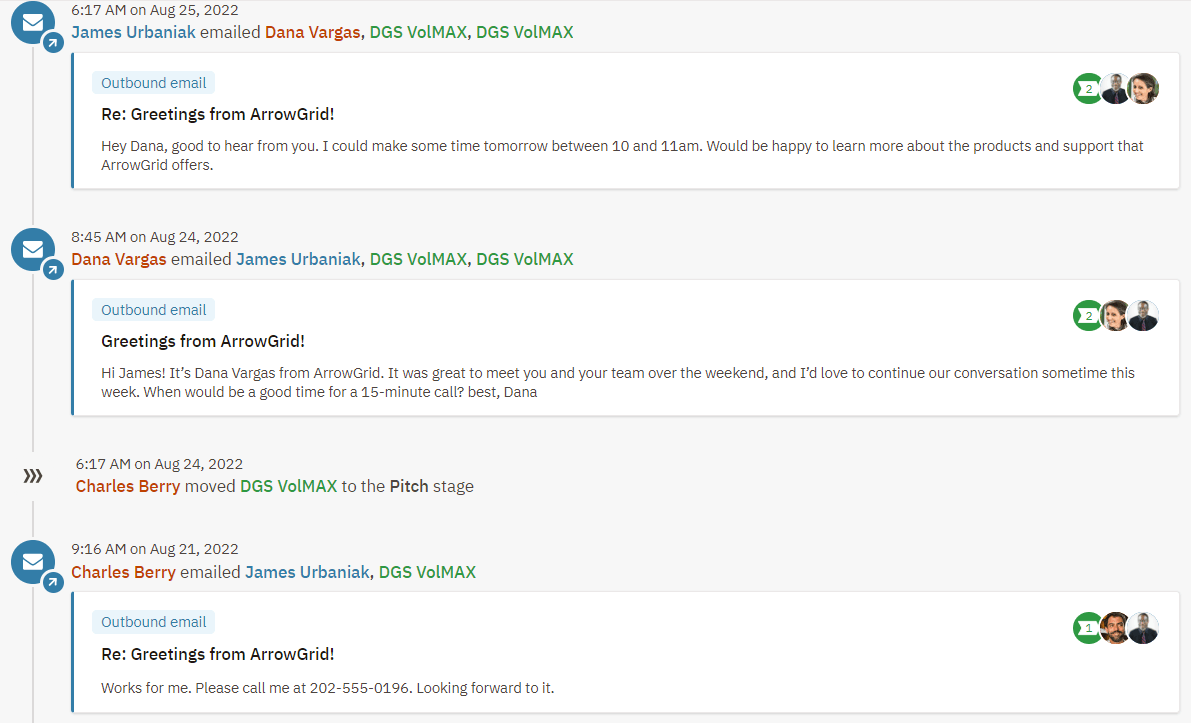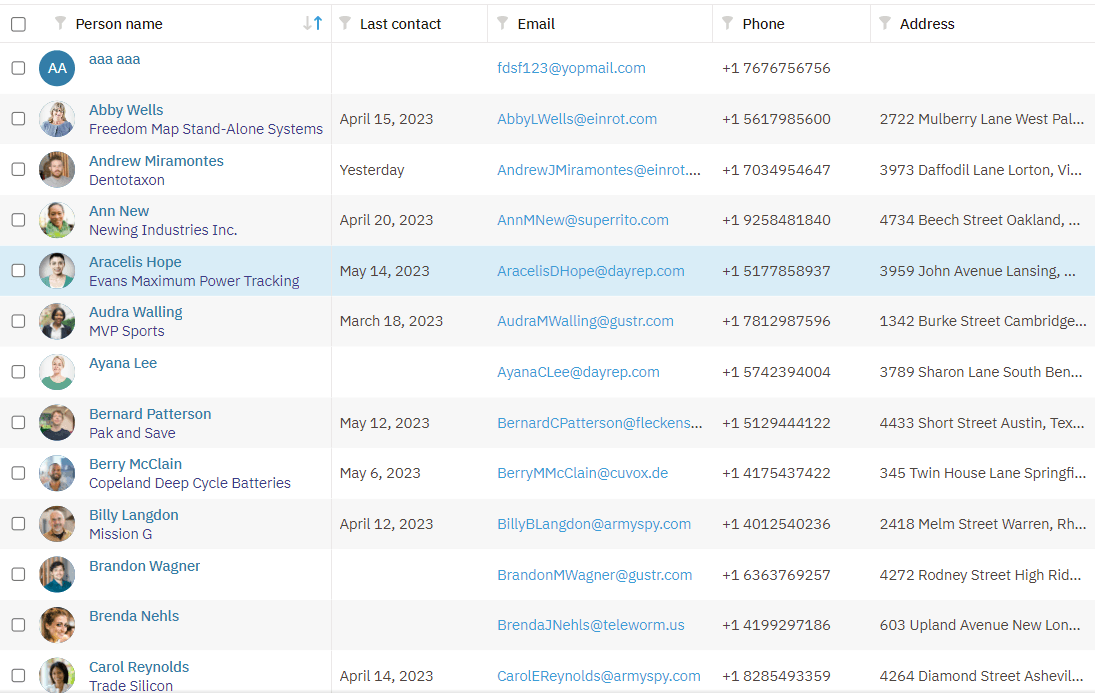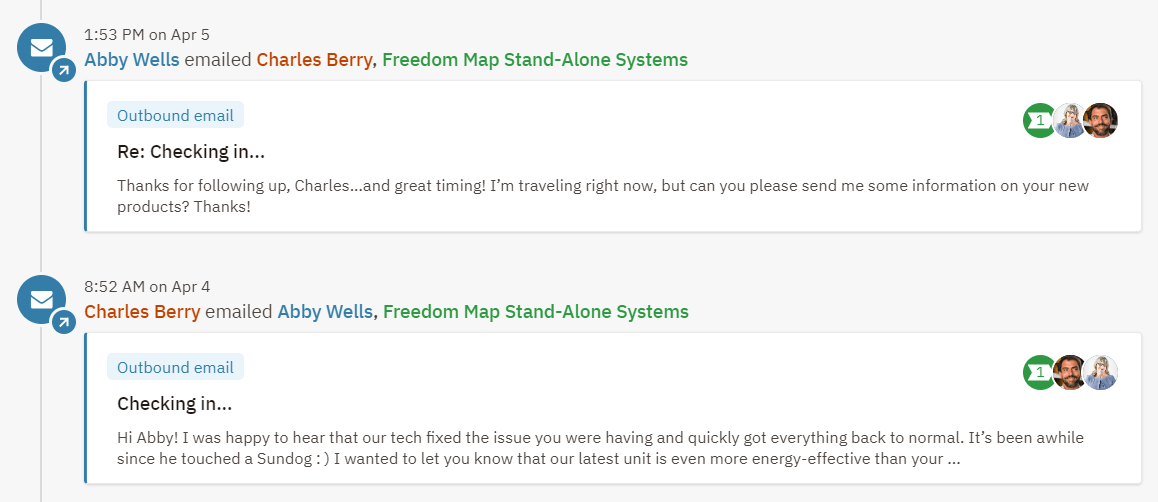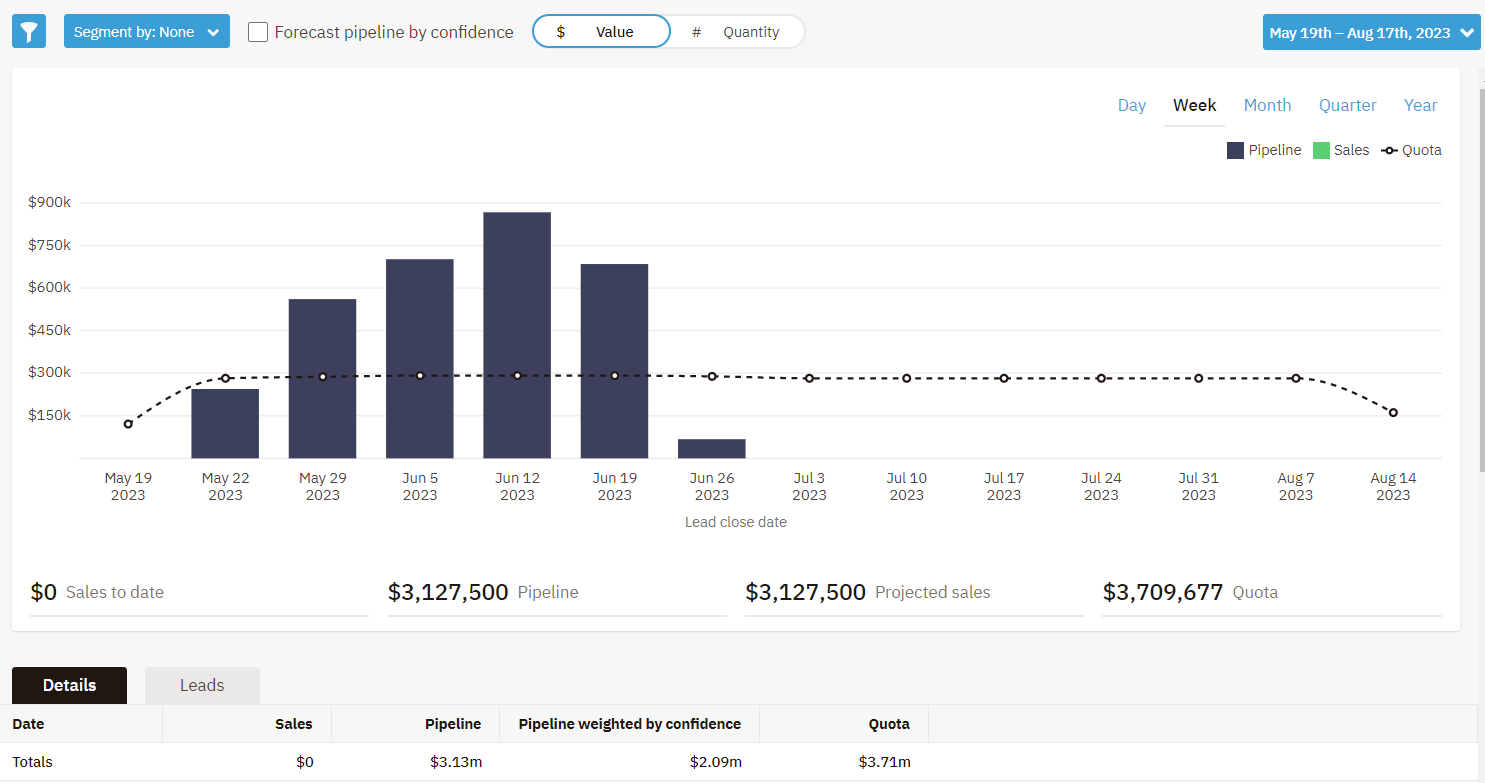-
 Published: May 27, 2023
Published: May 27, 2023
-
 13 min. read
13 min. read
-
 Sina Mchunu
Sina Mchunu Research & Tech Content Writer
Research & Tech Content Writer
- Sina is a marketing expert who specializes in SEO, AI, and digital marketing content. With over five years of experience, she’s written hundreds of pieces, spanning a variety of topics and industry niches. She loves combining her strong eye for detail and passion for storytelling in her work. You’ll find her fruit picking or horse riding at the local farm when she’s not writing.
Today’s customer relationship management (CRM) systems are far more than customer information databases — they monitor customer activity, automate marketing efforts, and give insights into business performance.
CRM systems are becoming increasingly complex and crucial to business success. That’s why maintaining competitiveness and efficiently managing customer interactions calls for a robust CRM strategy for your organization. A CRM strategy can streamline procedures, enhance customer happiness, and boost income.
This article contains all the information you need about:
- What is a CRM strategy?
- When would you need to implement a CRM strategy?
- Benefits of a CRM strategy for your business
- How to develop a CRM strategy
But first, here’s an article about CRM experience and how you can use it to boost conversions and revenue.
Don’t miss our Marketing Manager Insider emails!
Join 200K smart marketers for the hottest marketing news and insights in your inbox.
Inline Subscription Form
“*” indicates required fields


What is a CRM strategy?
A CRM strategy is a plan of action for managing and interacting with customers to boost relationships, loyalty, and revenue. It entails employing technology and data to learn more about clients, tailor interactions, and enhance satisfaction.
When do you need to implement a CRM strategy?
Imagine you run a telecommunications company or a global corporation with multiple sales teams working in different regions, each with its own customer data set.
Making sense of the data and identifying patterns will be difficult without a unified data collection, processing, and reporting system. So, it’s essential to carry out the CRM strategy.
In this situation, optimizing sales processes and increasing customer satisfaction with a CRM strategy can allow you save time and money.
Using a CRM system, you can centralize customer data and automate tasks, allowing your team to focus on networking and closing deals.
Benefits of a CRM strategy for your business
Implementing a CRM strategy comes with many perks. Some of these include the following:
- Enhance the sales process
- Streamline customer data management
- Improve customer communication
- Improve customer retention and loyalty
Read on to learn more about how each benefit can elevate your business.
Enhance the sales process
A CRM strategy enhances sales by providing valuable insights into customer behavior and preferences, allowing your team to tailor their approach and messaging accordingly.
A CRM solution can help you find sales process bottlenecks and other weak spots by monitoring the whole sales cycle. Consider a software corporation with a dedicated sales force. The team leader —John — is frustrated because they are not meeting their monthly targets.
He realizes that their communication with customers could be more consistent, and they need a better system to track customer interactions.

John then introduces a CRM strategy to the team and explains how it can improve customer communication and boost sales revenue.
The sales team can now monitor the development of each sale, spot potential roadblocks, and tailor their services to each client because of this tactic and the use of a CRM tool. Customers are happier because they feel heard and understood, resulting in increased satisfaction and sales for the business.
A CRM system and a good strategy can automate lead nurturing and follow-up, freeing your team’s time to build relationships and close deals. Implementing a CRM strategy can streamline your sales process and drive revenue growth for your business.
Streamline customer data management
Customer data management is crucial to running a successful business. With the increasing amount of data generated daily, streamlining customer data management has become more critical.

A CRM strategy can streamline customer data management by providing a centralized database for all customer interactions and enabling your team to personalize their communication and marketing efforts based on customer behavior and preferences. It can help identify potential sales opportunities and improve customer retention rates.
Having all customer information in one location lets you easily track interactions, purchases, and preferences. Finding customer base patterns and trends through data analysis can help you provide better service, do more targeted marketing efforts, and increase satisfied customers.
In addition, when you better understand your customers, you can quickly identify upsell and cross-sell opportunities, increasing revenue and growth.
Improve customer communication
With a CRM system and strategy in place, you can automate certain aspects of customer communication, such as sending out personalized emails or reminders for upcoming appointments. This way, you save your team time and ensure no crucial interactions fall through the cracks.

Also, by tracking customer communication history, your team can quickly pickup where they left off and provide a seamless customer experience. A CRM strategy allows you to communicate better with your customers by understanding their preferences and needs, leading to more personalized interactions that build trust.
It can result in increased customer satisfaction and improved sales and revenue for your business. Implementing a CRM strategy can significantly impact your business’s success by improving customer communication.
Improve customer retention and loyalty
A CRM strategy can help your business retain existing customers by providing personalized experiences and promptly addressing their pain points.
By keeping track of customer interactions and preferences, your team can provide tailored recommendations and solutions that will keep customers satisfied and loyal to your brand. This strategy can increase customer lifetime value and word-of-mouth referrals, boosting sales and revenue.
Additionally, implementing a CRM system can improve communication and collaboration within your team. There will be less room for misinterpretation or wasted time if all team members have easy access to the same database containing essential information about each customer.
This method has the potential to improve both internal processes and interactions with customers.
Our digital marketing campaigns impact the metrics that improve your bottom line.
See Our Approach
$10 billion

24 million

7.14 million
How to develop a CRM strategy
With this newly gained knowledge of CRM and its potential benefits, we can move forward with creating a plan for your company’s expansion.
Here’s how to create a CRM strategy:
- Define your business goals and KPIs
- Analyze customer data
- Identify target audience segments
- Choose appropriate tools and technologies for your CRM
- Create a plan to implement the strategy
- Train your team
- Monitor and adjust
1. Define your business goals and KPIs
Identifying your organization’s key performance indicators (KPIs) and goals is the first step in creating a successful CRM strategy. You must first establish these goals to ensure that your CRM initiatives support your overall corporate goals.
After establishing your company’s objectives, you must settle on the KPIs that will be used to evaluate the effectiveness of your CRM initiative. You may use these KPIs to monitor development and pinpoint problem spots.
Selecting KPIs that matter to your organization and can be easily measured is crucial to its success. Some common KPIs for a CRM strategy include the following:
- Customer acquisition cost aids in calculating the expense of recruiting new clients. To calculate it, divide the sum of the marketing and sales expenses by the quantity of brand-new clients attracted during that time.
- Customer retention rate assesses the efficacy of a company’s customer loyalty programs and overall customer satisfaction because it quantifies the percentage of customers who remain loyal to a brand over a predetermined period.
- Customer lifetime value predicts the sum of all purchases from your business that a customer will make over time based on the frequency of consumer purchases and average annual spending.
- Lead conversion rate measures the percentage of website visitors that complete the desired task, such as filling out a form or making a purchase. It can offer insightful information on how well marketing efforts and website designs work.
- Customer satisfaction score indicates how satisfied customers are with the goods or services provided by your business. It’s frequently used with other metrics to evaluate consumer involvement and loyalty.
You can gain more insight into your customers and enhance your company’s entire CRM strategy by monitoring these Metrics. You can also use these to find areas for improvement and take the required steps to improve customer experience.
2. Analyze customer data
Discovering your customers’ routines, preferences, and pain points is the next step in finding ways to improve their satisfaction. You can gather this information using a variety of methods, including the ones listed below:
- Surveys: You can swiftly and affordably gather large volumes of data in this fashion and customize it to certain target groups or demographics. A consumer survey may provide insightful information about your market, goods, and rivals.
- Social media listening: This method involves monitoring online conversations about your brand, products, and industry on social media platforms. This channel can provide valuable information on consumer sentiment, competitor activity, and emerging trends.
- Website analytics: This tactic gives you insights into customer behavior, popular products or services, and areas for improvement on your website. You can use this information to refine advertising campaigns and guide fact-based business decisions to boost your firm’s online visibility.
- Customer support interactions: With your daily customer interactions, you can identify common customer issues and pain points and improve your products or services. Your customer service representatives may learn how to better handle consumer questions by listening to and acting on feedback from your clientele.
You can also learn more about your target market, find out where they’re having problems, and create solutions by doing customer-centric research. You must analyze relevant client data to develop a strategy that effectively caters to your intended market.
3. Identify target audience segments
A target audience segment is a group of customers with similar characteristics or behaviors identified through data analysis and targeted with specific marketing strategies to increase engagement and sales.
Understanding and appealing to the wants and desires of one’s target market can significantly boost the success of one’s marketing campaigns. Once you collect and analyze customer data, you can use your findings to segment customers based on common characteristics or behaviors that influence their buying decisions.
This step helps you create targeted marketing campaigns and personalized experiences that resonate with each customer segment, ultimately increasing customer loyalty and driving revenue growth for your business.
For instance, if you’re a clothing retailer, you can identify a target audience segment of young adults who prioritize sustainability in their purchasing decisions. You can customize your marketing messages to highlight the eco-friendly materials your brand uses in clothing and offer promotions for recycling old clothes.
Similarly, if you run a hotel chain, you can identify a target audience segment of families with young children who prioritize amenities such as a pool and complimentary breakfast. By creating family-friendly packages and highlighting these amenities in their marketing messages, your hotel can attract and convert this specific segment of customers.
This targeted approach can increase engagement and sales among this group of customers. It’s important to note that target audience segments may overlap and that businesses may have multiple segments to target.
By understanding each segment and tailoring marketing strategies accordingly, companies can maximize their marketing efforts and increase their overall return on investment (ROI).
4. Choose appropriate tools and technologies for your CRM
Choosing appropriate tools and technologies for your CRM is crucial to ensuring its effectiveness and efficiency for your strategy. One key consideration is the type of CRM software you choose, which determines your system’s features.
You can choose from various services, from simple online apps to robust PC programs. It’s essential to evaluate your specific needs and budget when selecting CRM software and the level of support and customization options the vendor provides.
Another essential factor is the integration capabilities of the CRM software. Your marketing automation software, email marketing platform, and social media management tools should communicate.
Taking this step ensures that your team can work together effectively from any device and that information is constantly current.
If you want to store sensitive client data in your CRM, its security and privacy features should be a top priority. Protecting sensitive client data from hackers requires software with solid security features like encryption and multi-factor authentication.
Furthermore, check that the program conforms with the General Data Protection Regulation and the California Consumer Privacy Act to prevent unwanted legal complications.
5. Create a plan to implement the strategy
The next step is to create an action plan to implement the chosen tools and CRM strategy, including timelines, resource allocation, testing protocols, and training programs for employees involved in CRM activities.
This plan should outline the specific actions and steps to implement the strategy. It should also include a timeline for each activity and identify who will carry out each task.
Plans for executing CRM strategies encompass everything from selecting and deploying a CRM software system to providing user training, from generating customer profiles and segmentation to rolling out hyper-specific marketing campaigns.
Your plan should also address any potential roadblocks or challenges during the implementation process and provide solutions for overcoming them. Additionally, you want to regularly review and update the plan to help adapt to changing circumstances and keep it relevant.
6. Train your team
After the strategy is created, it is crucial to train the salespeople, marketers, and customer service representatives who will utilize the CRM system to maximize its benefits.
Consider assigning a CRM expert to each department to provide ongoing support and answer any questions that may arise. To convince your team to adopt the CRM, you must demonstrate its value in terms of time savings and enhanced customer relationships.
Remember that training is an ongoing process that you should revisit periodically to ensure everyone uses the system to its fullest potential.
Providing support and resources for employees with questions or concerns about using the CRM system is also crucial. This approach can include offering additional training sessions, creating user manuals, or assigning a designated point person for troubleshooting.
7. Monitor and adjust
Checking in on the progress of your CRM strategy and making any necessary adjustments in response to feedback from customers and employees is essential to ensuring its success.
Regularly analyzing your CRM data can help you identify patterns and trends to inform your strategy. With this method, you can monitor consumer actions, including how often they engage with your brand and the specific items they buy.

You should also keep tabs on your team’s performance and analyze their use of the CRM system to pinpoint areas for improvement. Tracking these KPIs can help you better tailor your CRM approach to the specific requirements of your business.
Regularly analyzing customer feedback and tracking customer satisfaction levels can also help identify areas for improvement and enhance the overall CRM strategy.
We foster and form long-term partnerships so that your business has long-term results.
Over 90%
Create a revenue-driving CRM strategy with WebFX
At WebFX, We have a team of experienced CRM specialists who can help you develop a customized strategy to increase your revenue and improve customer retention. Our approach includes the following:
- Analyzing your current customer data
- Identifying growth opportunities
- Implementing targeted campaigns to engage and convert leads
Our CRM approach is designed to boost sales and income while simultaneously enhancing customer happiness and loyalty.
We’ll get to know your organization well to craft a strategy that fits your specific requirements and can be implemented within your budget. Our team will also provide ongoing support and optimization to ensure that your CRM strategy continues to drive results over time.
Have questions? Contact us online or call 888-601-5359 to learn how we can help you grow your business with an effective CRM strategy.
-
 Sina is a marketing expert who specializes in SEO, AI, and digital marketing content. With over five years of experience, she’s written hundreds of pieces, spanning a variety of topics and industry niches. She loves combining her strong eye for detail and passion for storytelling in her work. You’ll find her fruit picking or horse riding at the local farm when she’s not writing.
Sina is a marketing expert who specializes in SEO, AI, and digital marketing content. With over five years of experience, she’s written hundreds of pieces, spanning a variety of topics and industry niches. She loves combining her strong eye for detail and passion for storytelling in her work. You’ll find her fruit picking or horse riding at the local farm when she’s not writing. -

WebFX is a full-service marketing agency with 1,100+ client reviews and a 4.9-star rating on Clutch! Find out how our expert team and revenue-accelerating tech can drive results for you! Learn more
Try our free Marketing Calculator
Craft a tailored online marketing strategy! Utilize our free Internet marketing calculator for a custom plan based on your location, reach, timeframe, and budget.
Plan Your Marketing Budget
Table of Contents
- What is a CRM strategy?
- When do you need to implement a CRM strategy?
- Benefits of a CRM strategy for your business
- Enhance the sales process
- Streamline customer data management
- Improve customer communication
- Improve customer retention and loyalty
- How to develop a CRM strategy
- 1. Define your business goals and KPIs
- 2. Analyze customer data
- 3. Identify target audience segments
- 4. Choose appropriate tools and technologies for your CRM
- 5. Create a plan to implement the strategy
- 6. Train your team
- 7. Monitor and adjust
- Create a revenue-driving CRM strategy with WebFX

Proven Marketing Strategies

Proven Marketing Strategies
Try our free Marketing Calculator
Craft a tailored online marketing strategy! Utilize our free Internet marketing calculator for a custom plan based on your location, reach, timeframe, and budget.
Plan Your Marketing Budget
What to read next





